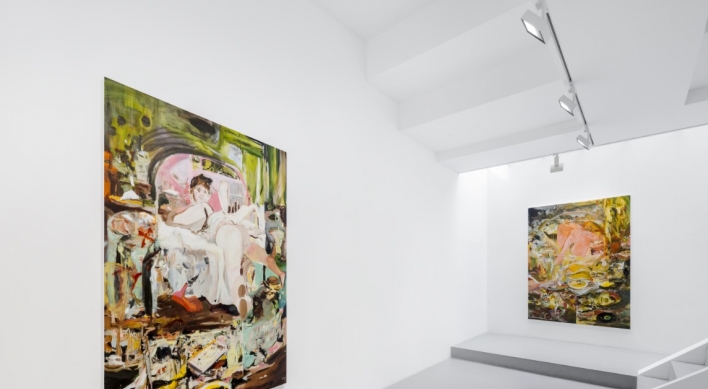In a comment on the art of reviewing and interpreting literary works, the English writer G.K. Chesterton wryly notes that “either criticism is no good at all (a very defensible position) or else criticism means saying about an author the very things that would have made him jump out of his boots.” According to Chesterton, criticism either repeats something already said in the literary work, or reads something into the work that the writer never intended. In either case, the usefulness of criticism is questionable, at best.
Writers, of course, have always had a troubled relationship with their critics; a love-hate relationship that often involves hostility, sycophancy or mischief. But writers and critics need each other. Criticism without a literary work seems like a contradiction in terms; a literary work without criticism is typically a sign of insignificance, failure. Writers may loathe the criticism of their works, while critics may loathe the literary works. Without the existence of both, however, it would be hard to recognize the texts as ― respectively ― literary works or critical pieces.
But why do we adhere to the notion that a literary work needs commentary and interpretation ― that it cannot be read independently, unaccompanied by criticism? And why is it that we rarely, if ever, read criticism ― a comment on another text ― as a literary work? If criticism, as Chesterton would have it, either gets it wrong or merely paraphrases the literary work, why do we still keep alive the tradition of interpreting literature?
The simple answer is that literary works are never quite what they initially appear to be. Interpreting a literary work thus involves more than merely understanding what the text literally attempts to do or say. The literary work invites criticism and interpretation. As a critic, one accepts this invitation to engage with the literary work’s otherness, its ambiguity. The literary work’s ambiguity haunts us, like a ghost whose presence we desperately attempt to capture and strap down, once and for all.
One finds a literal illustration of this ghostly activity in Henry James’ novella “The Turn of the Screw,” which narrates the story of an unnamed woman who is hired as a governess at an estate called Bly. Soon, strange things begin to occur. The governess sees people who have been long dead, and the children whom she looks after ― Flora and Miles ― start to act odd as well. The governess increasingly becomes desperate to save the children, convinced that they are possessed by evil spirits. However, only the governess is able to see the ghosts; whenever she asks the children, they deny seeing anything at all. Eventually, in the final scene, the governess physically forces Miles to confess that he can indeed see the ghosts, which tragically results in the boy’s death.
“The Turn of the Screw” stirred considerable controversy among critics and scholars when it was published in 1898. One critic called it “the most hopelessly evil story that we have ever read in any literature, ancient or modern.” In the following three decades, critics read “The Turn of the Screw” as a ghost story ― a story about a governess heroically attempting to rescue innocent children from being possessed by evil spirits.
In 1934, the critic Edmund Wilson turned the screw of interpretation, so to speak, by arguing that the text was in fact not a ghost story but rather a text about hysteria ― the governess’ descent into mental illness. Wilson read James’ story as a psychoanalytic case story according to which the governess was unconsciously in love with the uncle of the children. Subsequently, the governess projected her desire onto her surroundings, which thus became hallucinatory ― a world inhabited by ghosts. According to Wilson, James fully intended to write a ghost story, but ended up writing one in which a different kind of ghost ― the governess’ unconscious ― eventually took over.
“The Ambiguity of Henry James” ― the title of Wilson’s critical essay ― is a piece of criticism that draws our attention to the unresolved ambiguity in James’ literary work, its ghostliness. But it is also a critical essay that itself claims to resolve this ambiguity once and for all -― via Freud’s psychoanalysis. Armed with Freud’s psychoanalytic text, Wilson was convinced that he had discovered the “trap” in James’ text, the trap that lures readers into a quagmire of literary ambiguity; and that he had avoided falling into this trap.
About four decades later, in 1977, the critic Shoshana Felman turned the screw of interpretation yet again by claiming that James’ text creates a trap in particular intended to snare the psychoanalytic critic, like Edmund Wilson. “There is no such thing as an innocent reader of this text,” Felman insists, since innocence as such is precisely what is being questioned in this story.
In trying to understand the story, we uncannily end up repeating and reenacting the actual plot in James’ text; the story forces us to choose between either the governess’ story (do we believe her?), as some characters in the story do ― or the children’s story, as other characters do.
While a suspicious reader like Edmund Wilson believes that he is interpreting James’ text, he is, in a sense, merely reenacting the governess’s suspicious reading; that the children are not telling the truth. As the governess forces Miles to “confess” that he is lying, and that he can indeed see the ghosts, Wilson forces the text to “confess” that it really is a madness story, and not a ghost story.
When Wilson describes the governess as mad, he is essentially invalidating her perspective, canceling out her interpretation. Both the governess, who suffocates the boy while forcing him to confess, and Wilson ― who exposes the governess as a mentally deranged patient ― commit an act of violence, a crime. It is as if the literary text suggests that in attempting to eliminate its ambiguity ― that which makes it a literary text, and that which continues to haunt us ― we risk killing or destroying it, like the boy Miles whose death at the hands of the governess abruptly terminates James’ “The Turn of the Screw.”
An ambiguous text haunts us, like a ghostly figure that eventually throws suspicion on everything. We risk turning into over-suspicious readers who invest every little sign and detail with meaning ― like James’ governess, at least according to Wilson.
The opposite of hysteria is common sense. But common sense is precisely what literature encourages us to question. As “The Turn of the Screw” and the criticism it has generated illustrate, there is no innocent place from which one can capture literature’s ambiguity. Reading literature involves the risk of gaining insight or being blinded by hysteria; to find oneself inhabiting a ghostly world in which there are meanings and layers of meaning everywhere ― and nowhere.
Writers, of course, have always had a troubled relationship with their critics; a love-hate relationship that often involves hostility, sycophancy or mischief. But writers and critics need each other. Criticism without a literary work seems like a contradiction in terms; a literary work without criticism is typically a sign of insignificance, failure. Writers may loathe the criticism of their works, while critics may loathe the literary works. Without the existence of both, however, it would be hard to recognize the texts as ― respectively ― literary works or critical pieces.
But why do we adhere to the notion that a literary work needs commentary and interpretation ― that it cannot be read independently, unaccompanied by criticism? And why is it that we rarely, if ever, read criticism ― a comment on another text ― as a literary work? If criticism, as Chesterton would have it, either gets it wrong or merely paraphrases the literary work, why do we still keep alive the tradition of interpreting literature?
The simple answer is that literary works are never quite what they initially appear to be. Interpreting a literary work thus involves more than merely understanding what the text literally attempts to do or say. The literary work invites criticism and interpretation. As a critic, one accepts this invitation to engage with the literary work’s otherness, its ambiguity. The literary work’s ambiguity haunts us, like a ghost whose presence we desperately attempt to capture and strap down, once and for all.
One finds a literal illustration of this ghostly activity in Henry James’ novella “The Turn of the Screw,” which narrates the story of an unnamed woman who is hired as a governess at an estate called Bly. Soon, strange things begin to occur. The governess sees people who have been long dead, and the children whom she looks after ― Flora and Miles ― start to act odd as well. The governess increasingly becomes desperate to save the children, convinced that they are possessed by evil spirits. However, only the governess is able to see the ghosts; whenever she asks the children, they deny seeing anything at all. Eventually, in the final scene, the governess physically forces Miles to confess that he can indeed see the ghosts, which tragically results in the boy’s death.
“The Turn of the Screw” stirred considerable controversy among critics and scholars when it was published in 1898. One critic called it “the most hopelessly evil story that we have ever read in any literature, ancient or modern.” In the following three decades, critics read “The Turn of the Screw” as a ghost story ― a story about a governess heroically attempting to rescue innocent children from being possessed by evil spirits.
In 1934, the critic Edmund Wilson turned the screw of interpretation, so to speak, by arguing that the text was in fact not a ghost story but rather a text about hysteria ― the governess’ descent into mental illness. Wilson read James’ story as a psychoanalytic case story according to which the governess was unconsciously in love with the uncle of the children. Subsequently, the governess projected her desire onto her surroundings, which thus became hallucinatory ― a world inhabited by ghosts. According to Wilson, James fully intended to write a ghost story, but ended up writing one in which a different kind of ghost ― the governess’ unconscious ― eventually took over.
“The Ambiguity of Henry James” ― the title of Wilson’s critical essay ― is a piece of criticism that draws our attention to the unresolved ambiguity in James’ literary work, its ghostliness. But it is also a critical essay that itself claims to resolve this ambiguity once and for all -― via Freud’s psychoanalysis. Armed with Freud’s psychoanalytic text, Wilson was convinced that he had discovered the “trap” in James’ text, the trap that lures readers into a quagmire of literary ambiguity; and that he had avoided falling into this trap.
About four decades later, in 1977, the critic Shoshana Felman turned the screw of interpretation yet again by claiming that James’ text creates a trap in particular intended to snare the psychoanalytic critic, like Edmund Wilson. “There is no such thing as an innocent reader of this text,” Felman insists, since innocence as such is precisely what is being questioned in this story.
In trying to understand the story, we uncannily end up repeating and reenacting the actual plot in James’ text; the story forces us to choose between either the governess’ story (do we believe her?), as some characters in the story do ― or the children’s story, as other characters do.
While a suspicious reader like Edmund Wilson believes that he is interpreting James’ text, he is, in a sense, merely reenacting the governess’s suspicious reading; that the children are not telling the truth. As the governess forces Miles to “confess” that he is lying, and that he can indeed see the ghosts, Wilson forces the text to “confess” that it really is a madness story, and not a ghost story.
When Wilson describes the governess as mad, he is essentially invalidating her perspective, canceling out her interpretation. Both the governess, who suffocates the boy while forcing him to confess, and Wilson ― who exposes the governess as a mentally deranged patient ― commit an act of violence, a crime. It is as if the literary text suggests that in attempting to eliminate its ambiguity ― that which makes it a literary text, and that which continues to haunt us ― we risk killing or destroying it, like the boy Miles whose death at the hands of the governess abruptly terminates James’ “The Turn of the Screw.”
An ambiguous text haunts us, like a ghostly figure that eventually throws suspicion on everything. We risk turning into over-suspicious readers who invest every little sign and detail with meaning ― like James’ governess, at least according to Wilson.
The opposite of hysteria is common sense. But common sense is precisely what literature encourages us to question. As “The Turn of the Screw” and the criticism it has generated illustrate, there is no innocent place from which one can capture literature’s ambiguity. Reading literature involves the risk of gaining insight or being blinded by hysteria; to find oneself inhabiting a ghostly world in which there are meanings and layers of meaning everywhere ― and nowhere.

By Eli Park Sorensen
Eli Park Sorensen is an assistant professor in the College of Liberal Studies at Seoul National University. He specializes in comparative literature, post-colonial thought and cultural studies. ― Ed.
-
Articles by Korea Herald




![[Grace Kao] Hybe vs. Ador: Inspiration, imitation and plagiarism](http://res.heraldm.com/phpwas/restmb_idxmake.php?idx=644&simg=/content/image/2024/04/28/20240428050220_0.jpg&u=)

![[Herald Interview] Mom’s Touch seeks to replicate success in Japan](http://res.heraldm.com/phpwas/restmb_idxmake.php?idx=644&simg=/content/image/2024/04/29/20240429050568_0.jpg&u=)


![[News Focus] Lee tells Yoon that he has governed without political dialogue](http://res.heraldm.com/phpwas/restmb_idxmake.php?idx=644&simg=/content/image/2024/04/29/20240429050696_0.jpg&u=20240429210658)









![[Today’s K-pop] Seventeen sets sales record with best-of album](http://res.heraldm.com/phpwas/restmb_idxmake.php?idx=642&simg=/content/image/2024/04/30/20240430050818_0.jpg&u=)